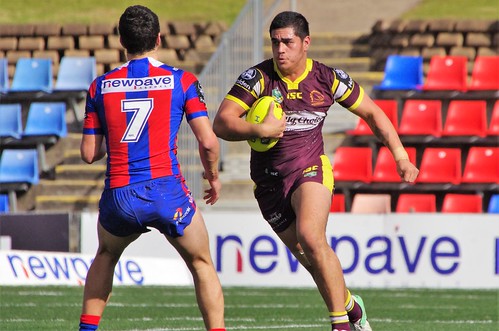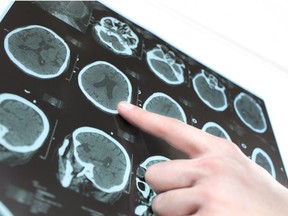Keenan: Brain stimulation making breakthroughs for disorders like ADHD
Keenan #Keenan

Breadcrumb Trail Links
Published Aug 12, 2023 • Last updated 1 day ago • 4 minute read
 Researchers are making good progress in using some novel brain stimulation techniques. Files, Getty Images Photo by sudok1 /Getty Images/iStockphoto Article content
Researchers are making good progress in using some novel brain stimulation techniques. Files, Getty Images Photo by sudok1 /Getty Images/iStockphoto Article content
A decade ago, when I wrote my book Technocreep, I talked about “wireheading” – the practice of directly stimulating the pleasure centres of the brain with small electric currents. That term comes from science fiction. In a 1969 Larry Niven story called Death by Ecstasy, a character apparently starves to death while stimulating his brain. Experiments on animals show that this is indeed a possibility. Perhaps the most disturbing tale was recounted in, of all places, the UCLA Law Review. It describes “a dolphin who, inadvertently left in a pool with the (brain stimulation) switch connected, delighted himself to death with an all-night orgy of pleasure.” That story has never been authenticated.
Advertisement 2
This advertisement has not loaded yet, but your article continues below.
THIS CONTENT IS RESERVED FOR SUBSCRIBERS ONLY
Subscribe now to read the latest news in your city and across Canada.
SUBSCRIBE TO UNLOCK MORE ARTICLES
Subscribe now to read the latest news in your city and across Canada.
REGISTER TO UNLOCK MORE ARTICLES
Create an account or sign in to continue with your reading experience.
Article content
I put wireheading in the same fringe category of body hacking as micro-dosing LSD. Steve Jobs was quoted as saying, “Taking LSD was a profound experience, one of the most important things in my life.” Now some Silicon Valley types, hoping to become the next Steve Jobs, take 10 micrograms of it every three days to sharpen their creativity. There may be benefits, but of course, there are also significant risks.
Article content
Researchers are making good progress in using some novel brain stimulation techniques. A study just published in Transitional Psychology found significant improvements in children with Attention-Deficit Hyperactivity Disorder (ADHD) when they were treated with a certain kind of electrical brain stimulation combined with cognitive training.
The worldwide prevalence of ADHD is estimated at 5.3 per cent. The condition is about twice as prevalent in males than in females. A recent meta-analysis of Canadian studies found that “ADHD diagnosis and the number of patients prescribed ADHD medication are increasing over time.”
The non-invasive brain stimulation used in the study jointly led by the University of Surrey and the Hebrew University of Jerusalem is transcranial random noise stimulation (tRNS). As described in the paper, “a weak electrical current is applied to the brain via skin-electrode interface, creating an electric field that modulates neuronal activity.”
By clicking on the sign up button you consent to receive the above newsletter from Postmedia Network Inc. You may unsubscribe any time by clicking on the unsubscribe link at the bottom of our emails or any newsletter. Postmedia Network Inc. | 365 Bloor Street East, Toronto, Ontario, M4W 3L4 | 416-383-2300 Thanks for signing up!
Article content
Advertisement 3
This advertisement has not loaded yet, but your article continues below.
Article content
The researchers, led by Dakwar-Kawar Ornella, studied unmedicated children aged 6 to 12. Eleven were given tRNS in conjunction with cognitive training. Their parents were then asked to track symptoms of ADHD using a standard questionnaire, and the kids were also asked about their sleep habits.
In the group that received the tRNS protocol, 55 per cent showed significant clinical improvement. Of course, there is always the possibility of a placebo effect, so another group of 11 children was given a sham procedure using similar electrodes but without the electrical stimulation. In this group, only 17 per cent showed improvement in ADHD symptoms. The only significant side effect reported was some worsening of sleep in the group that received the stimulation. However, compared to the side effects of drugs often prescribed for ADHD, this is relatively minor.
Deep brain stimulation (DBS), which involves surgically implanted electrodes, is being used for movement disorders such as essential tremor, Parkinson’s disease, and dystonia. Stimulation is controlled by a programmable generator, usually implanted under the skin in the upper chest.
Advertisement 4
This advertisement has not loaded yet, but your article continues below.
Article content
According to the American Association of Neurological Surgeons (AANS), DBS has also been used to treat epilepsy and obsessive-compulsive disorder. That one is fascinating because it moves the technique into the realm of behaviour modification.
The aans.org webpage notes that “the electrical impulses can also adjust for the chemical imbalances in the brain.” It tells how Erin, “A lively 21-year-old woman, fought her battle with OCD.” It notes that the DBS procedure, which she received at Albany Medical Center, gave Erin her life back. She says, “Now, I can be who I really am and tell people my story and hopefully inspire people and help people along the way.”
You can buy home brain stimulation online for a couple of hundred dollars. One even comes with a pre-marked cap to guide you in placing the electrodes. They are non-invasive, and several papers have reported an absence of side effects.
Would I try one of these on myself? Probably yes, in a controlled setting like the Biohacking Village that pops up every year at the DEF CON conference. However, I’d also advise anyone dabbling in at-home brain stimulation to first read “Transcranial Direct Current Stimulation (tDCS): A Beginner’s Guide for Design and Implementation” by Thair et al. in Frontiers of Neuroscience. The authors have doctorates and come from the School of Psychology at the University of Nottingham.
I don’t usually give references, but since you are literally betting your brain here, I want you to err on the side of caution. There’s no doubt that scientists will be making many more discoveries about this technology, and, who knows, you might make some, too.
Dr. Tom Keenan is an award-winning journalist, public speaker, professor in the School of Architecture, Planning and Landscape at the University of Calgary, and author of the best-selling book, Technocreep: The Surrender of Privacy and the Capitalization of Intimacy.
Article content Share this article in your social network Comments
Postmedia is committed to maintaining a lively but civil forum for discussion and encourage all readers to share their views on our articles. Comments may take up to an hour for moderation before appearing on the site. We ask you to keep your comments relevant and respectful. We have enabled email notifications—you will now receive an email if you receive a reply to your comment, there is an update to a comment thread you follow or if a user you follow comments. Visit our Community Guidelines for more information and details on how to adjust your email settings.
Join the Conversation
Advertisement 2
This advertisement has not loaded yet, but your article continues below.
Advertisement 1
This advertisement has not loaded yet, but your article continues below.